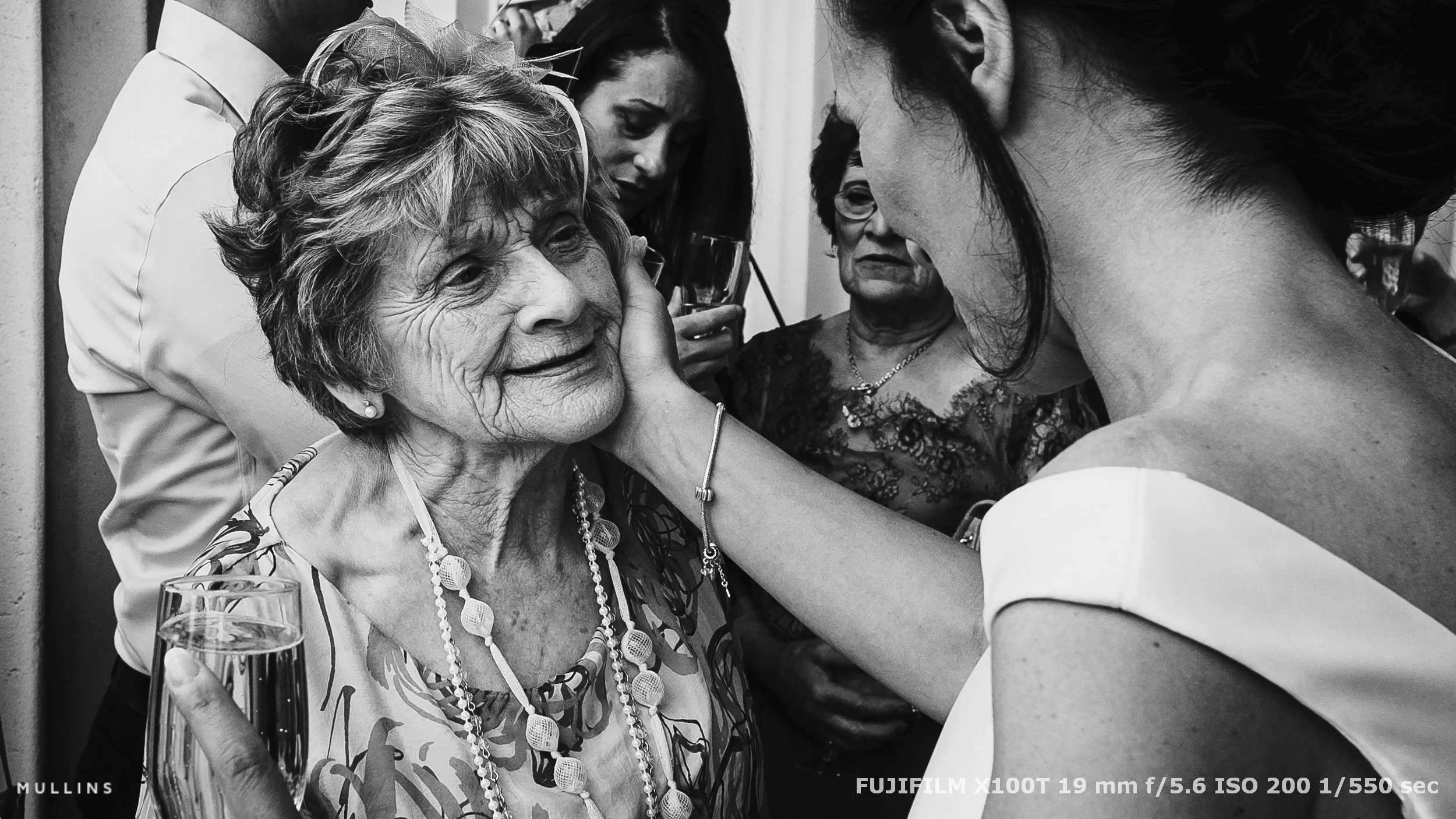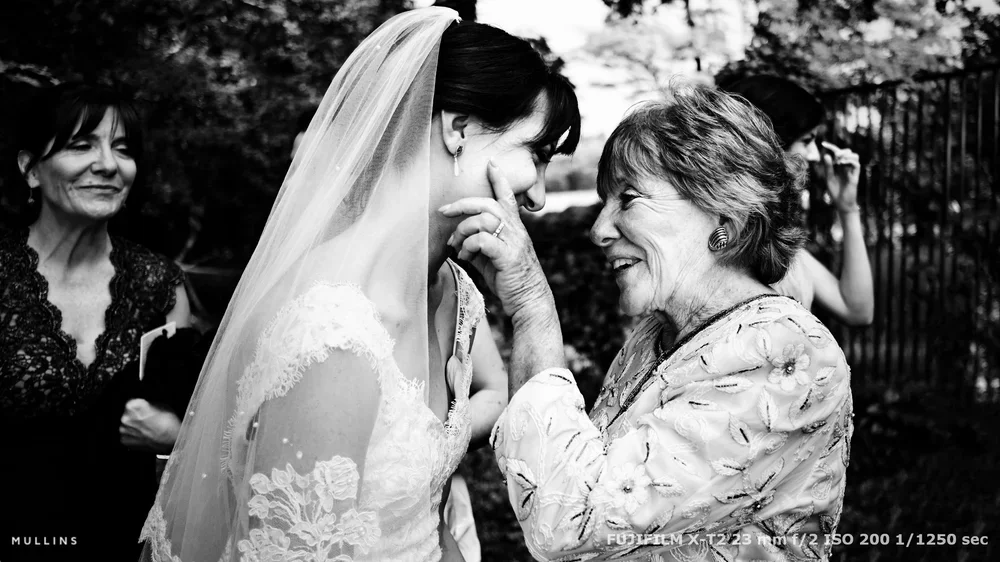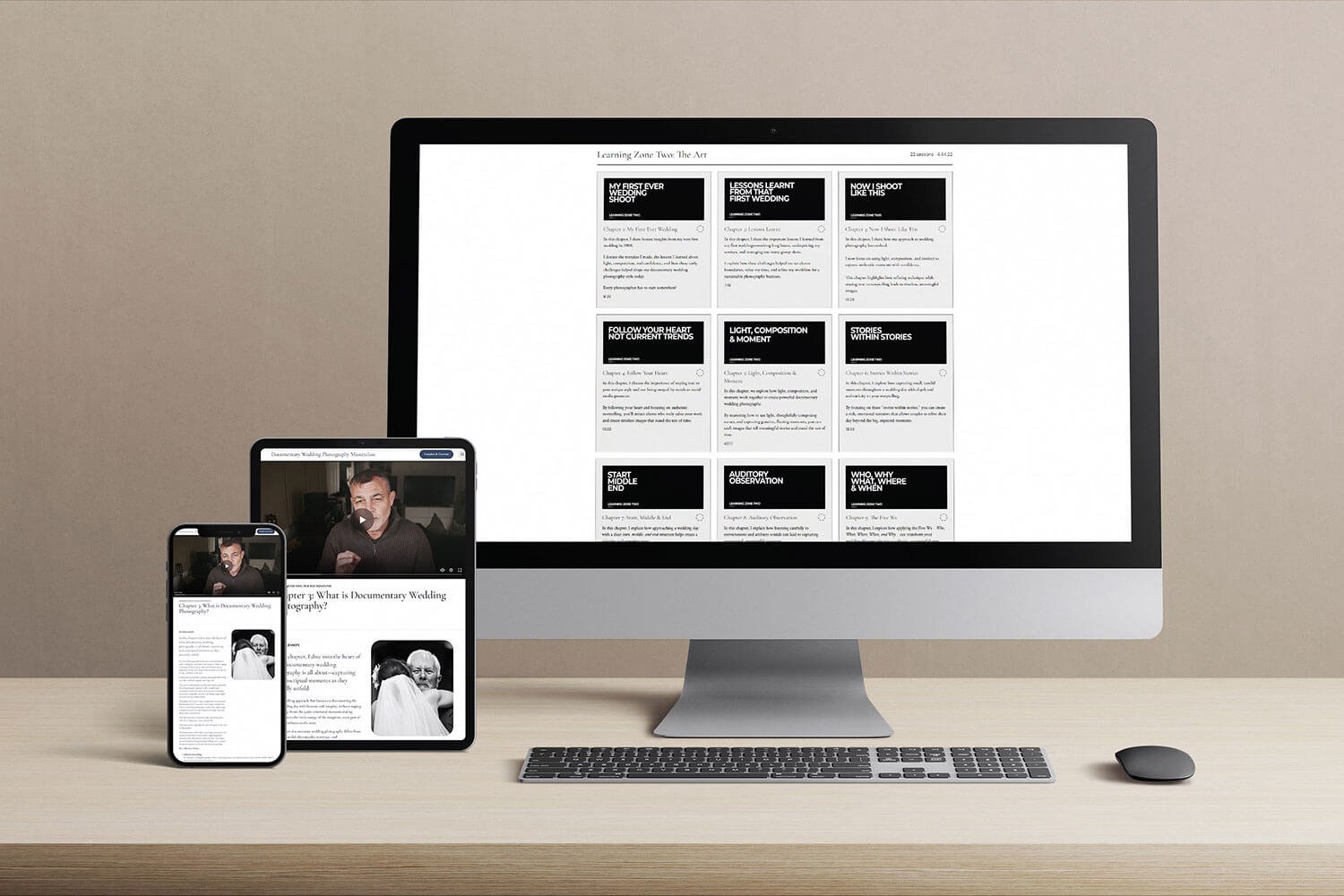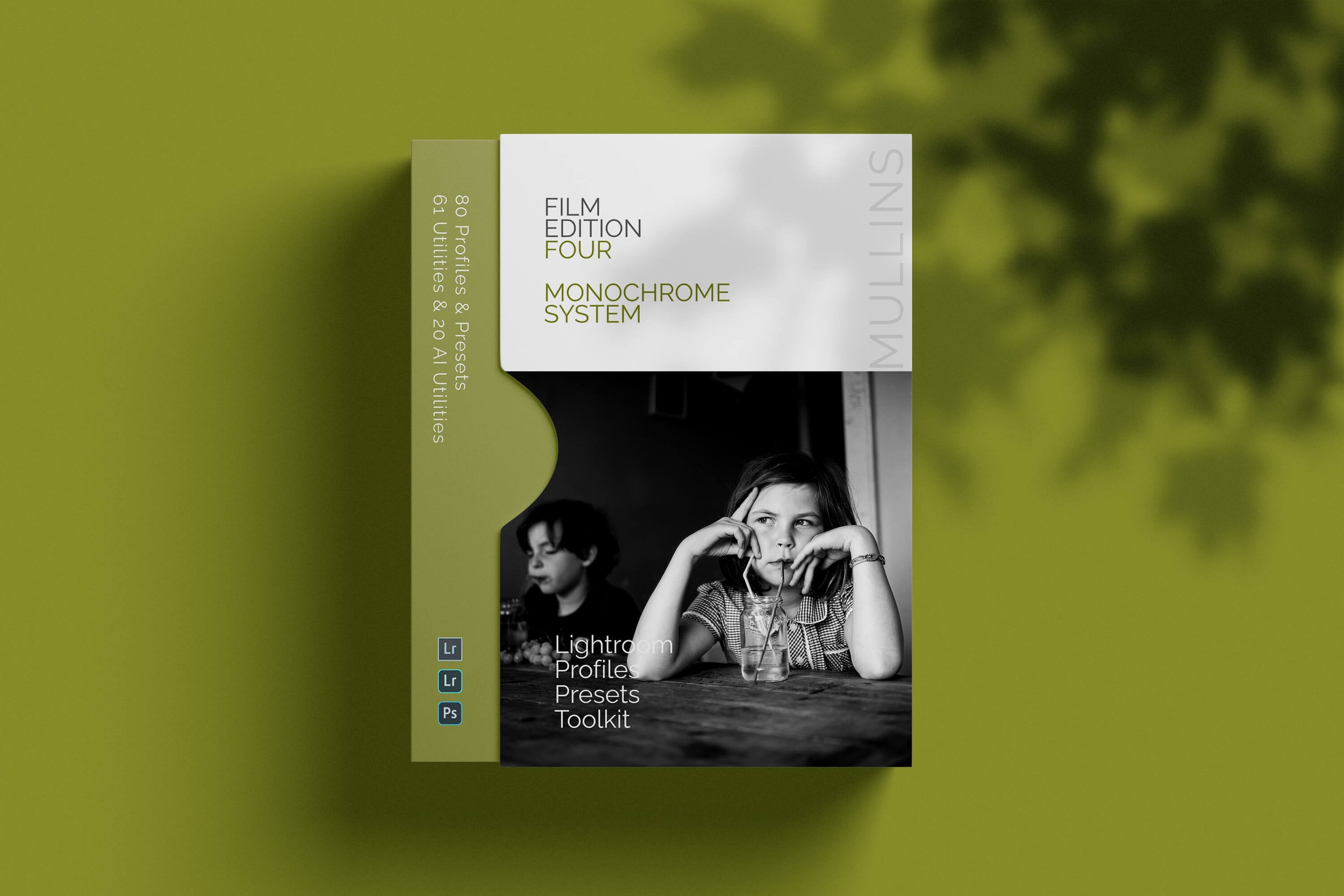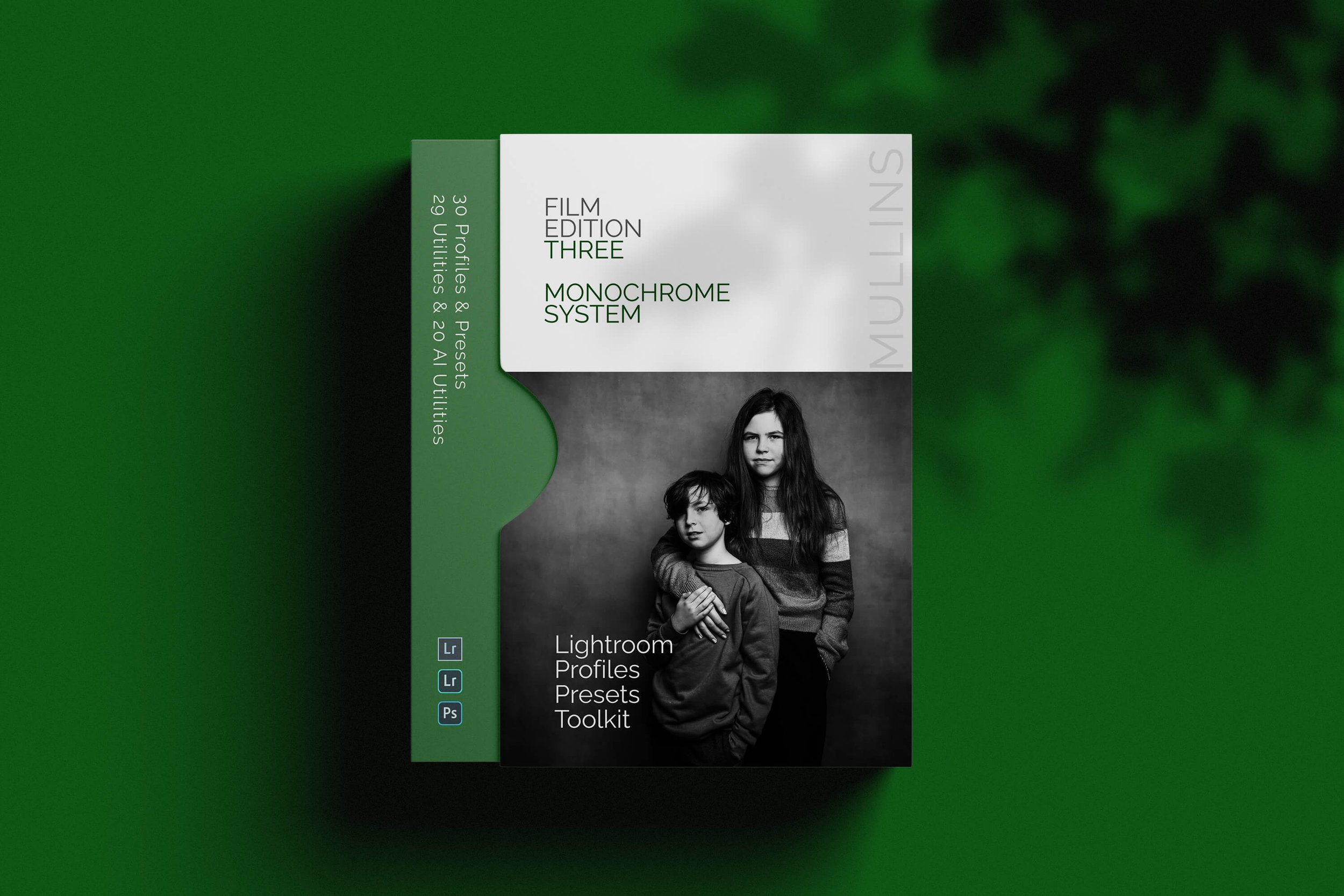Keep You in the Moment: How I Work as a Documentary Wedding Photographer
At a Glance
I promise couples I won’t interrupt their day. That single promise controls everything I do as a Wedding Photographer. For you, if you shoot weddings, this piece is my practical guidelines: preparation that removes problems, a simple working philosophy, zero direction , and an edit that tells the truth without overloading the clients. Sixteen years and 700+ weddings taught me that if you keep people in their moments, the photographs will follow.
Why this matters
Authenticity is fragile. Small interruptions can cost big moments.
Preparation creates headspace. Good logistics let real emotion show in the wedding story.
Editing is storytelling. Tight, honest sets age better than large galleries.
The main philosophy
Everything rests on three pillars: light, composition, and moment.
I let light tell me where to stand, I try to set a clean composition early, then I wait for the moment.
I don’t machine-gun through emotional moments. One frame that holds meaning is worth more than twenty near misses. Patience is a practical skill; try to learn it.
Practical steps for documentary wedding workflow — stages, purpose, and cues
| Stage | What I do | Why it matters | Practical cues |
|---|---|---|---|
| Prep | Walk the schedule and spaces; pre-visualise transitions. | Removes friction so real moments can happen. | Note shade vs sun; identify locations if weather isn't great. |
| Light checks | Pre-meter key scenes (confetti, speeches, first dance). | Lets you watch behaviour, not histograms. | Lock exposure for the next scene while walking between spaces. Or trust P-Mode |
| Framing | Compose the background before the action. | Clean frames read as intentional, not lucky. | Edges tidy, light direction set, no bright dramatic issues. |
| Patience & timing | Wait for hands/eyes to tell the story. One frame at the peak of the moment. | Avoids nearly-moments and keeps you respectful. | Breathe in → shoot → lower camera. | Proximity ethics | Work close, never intrusive. | Intimacy without interference. | One step in, one frame, step out. |
| Dancefloor | Subtle light, honest shutter speed; anticipate the swell of the moment. | Energy drives these moments. | Hold line; shoot the crest of the moment. |
| Curation | Build a story spine; cut filler/duplicates. | Galleries that age well and feel true. | “Does this frame say something real?” If not, bin it. |
Prep that removes problems
Before the camera comes out, I think about the day. Not to control it, but to make it easier for real things to happen.
Schedule and spaces. I note where transitions between parts of the day will happen and where people will naturally gather.
Light checks. If confetti is under a canopy or down the aisle, I pre-meter that shade. If speeches are in a room with a lot of windows and natural light, I plan angles that avoid glare but keep faces in the frame.
Quiet contingencies. If the weather moves us inside, I know that I have fast prime lenses that will cope.
The in-between is where moments happen
I’ve mentioned this a lot on this website. The walk between places, the deep breath after the vows, the lull before music - these are not gaps. I often walk a few paces ahead of a group to shoot through their laughter, then move away so I’m present but not a presence.
If you’re noticed occasionally, that’s fine. We’re there, not hiding. We do not have a cloak of invisibility, sadly.
Proximity, ethics, and respect
Close up does matter. Faraway images rarely feel like anything (though they can have their place). But close is not intrusive. I read the room, step in once, click a couple of times, then move on. Sometimes the most respectful act is lowering the camera.
Machine-gunning through moments will not build trust, and worse, can erode a moment from actually happening.
Go deeper: The Art of Documentary Wedding Photography
What you’ll get: real-world workflow, live case studies, story-first editing.Who it’s for: photographers who want honest, patient, people-centred coverage.
Check it out → The Art of Documentary Wedding Photography
Gear prep & knowledge
Fast primes, simple setup, configured for speed. Less menu, more seeing.
If you find yourself fiddling with the camera, simplify. Your attention is the tool that matters.
“A Photograph doesn’t have to be great, but it must be important.”
The edit: finding the future nostalgic look
Curation is half the skill of a Documentary Wedding Photographer. I look for a sequence that carries emotion from moment to moment. Duplicates get deleted. Filler shots get deleted.
Only one of four very similar photos can be the best. Removing the other three elevates the fourth to great.
The test is simple: does this frame say something real about the people and the day? If it’s merely “ok”, it doesn’t earn its place.
Practical drills for documentary wedding photographers
Compose first. Lock a background, then wait for hands and eyes to bring it to life.
Meter once, watch twice. Pre-set exposure for the next scene, or use P-Mode, then concentrate on behaviour.
Transition practice. Follow three guest movements between spaces and make one strong frame from each.
One-frame discipline. In emotional moments, allow yourself a single frame, then step back. Train your timing.
FAQ for authentic documentary wedding photographers
-
No, never. An authentic documentary wedding photographer has an entirely hands-off approach.
-
Pre-walk, pick angles with face-friendly reflection, expose for skin, and use clean backgrounds to reduce chaos.
-
Anticipate the peak moments, lean on fast glass, stabilise your stance, and shoot at the crest rather than in the swell.
-
Tight, honest, story-led. Fewer images than you might expect, more meaning than you might think.




Quick Wins
Quick Wins
Compose first: set a clean background, then wait for hands and eyes to animate it.Pre-meter the next scene: expose for where you’re going so you can watch behaviour, not dials and buttons.
One-frame discipline: in emotional moments, take a single decisive frame and step back.
Transitions matter: treat the walk between spaces as oportunity, not dead time.
Closing thought
Documentary wedding photography is an act of respect; for people, for emotion, for truth.
Keep the moments in your mind, and the pictures will look after themselves.
Edit like this with my Lightroom Presets
Natural colour, rich monochrome and a consistent finish across a full set. Built for speed and subtlety.
New here? You can always start with one pack and build from there.





